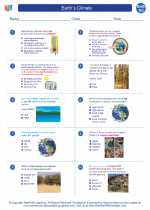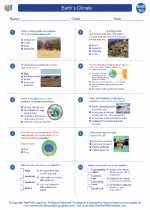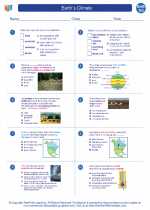Barometer: Explanation and Study Guide
A barometer is a scientific instrument used to measure atmospheric pressure. It is an important tool in meteorology for forecasting weather changes. There are two main types of barometers: mercury barometers and aneroid barometers.
Mercury Barometer
This type of barometer uses a column of mercury to measure air pressure. The height of the mercury column changes with variations in atmospheric pressure. As the pressure increases, the mercury column rises, and as the pressure decreases, the column falls. The standard atmospheric pressure at sea level can support a mercury column that is approximately 760 millimeters (29.92 inches) high.
Aneroid Barometer
An aneroid barometer uses a flexible metal box called an aneroid cell to measure atmospheric pressure. As the pressure changes, the aneroid cell expands or contracts, which in turn moves a pointer on a calibrated scale to indicate the pressure. Aneroid barometers are commonly used in households and are more portable than mercury barometers.
Study Guide
Types of Barometers
- Mercury Barometer
- Aneroid Barometer
How Barometers Work
Explain the functioning of a mercury barometer and an aneroid barometer in measuring atmospheric pressure.
Applications of Barometers
Discuss the importance of barometers in weather forecasting and how they are used in predicting changes in weather patterns.
Calibrating and Using a Barometer
Provide guidelines on how to calibrate and effectively use a barometer for accurate pressure measurements.
Comparing Mercury and Aneroid Barometers
Compare and contrast the advantages and disadvantages of mercury and aneroid barometers in terms of accuracy, portability, and maintenance.
Studying the barometer is essential for understanding atmospheric pressure and its role in weather patterns. Mastering the concepts and applications of barometers will help in comprehending the dynamics of atmospheric pressure and its impact on weather conditions.
.◂Earth Science Worksheets and Study Guides High School. Earth`s Climate

 Worksheet/Answer key
Worksheet/Answer key
 Worksheet/Answer key
Worksheet/Answer key
 Vocabulary/Answer key
Vocabulary/Answer key
 Vocabulary/Answer key
Vocabulary/Answer key
 Vocabulary/Answer key
Vocabulary/Answer key
